Mortgage interest rates can often seem elusive and complex. This article aims to demystify how they work and how you can keep track of their movements.
The Two Types of Mortgage Rates: Variable and Fixed
Mortgage rates come in two main types: variable and fixed.
Variable Mortgage Rate
A variable rate is directly tied to lender prime rates, which are in turn affected by the Bank of Canada’s benchmark rate. Variable rates tend to be lower than fixed rates due to the risk of change. These rates may fluctuate during a mortgage term as determined by a Bank of Canada or lender decision to move the rate.
Fixed Mortgage Rate
A fixed rate, on the other hand, is set for the duration of your mortgage term. Fixed rates tend to be higher than variable rates as you’re paying a bit more for budget security. These rates are mainly influenced by Bank of Canada bond yields and changes in the bond market.
The Role of the Bank of Canada in Variable Mortgage Rates
The Bank of Canada (BoC) sets the ‘target’ for the overnight lending rate, which influences what banks charge their best customers — the prime interest rate. When the BoC changes its target overnight rate, it signals to the banks that it wants them to change their prime rates.
The Influence of Government Bonds on Fixed Mortgage Rates
Banks buy bonds from the Bank of Canada as a low-maintenance source of fixed-interest income. They also use fixed mortgage rates as an income source, but mortgages are higher maintenance compared to bonds. Therefore, lenders set their fixed rates for mortgages at a higher point than less-costly bonds to keep these two income sources on par.
How Rates Affect Mortgage Acquisition
When interest rates increase, it costs more to borrow money. This impacts how much you’ll pay each month for your mortgage, or how much house you’ll be able to afford. Conversely, when rates go down, the cost of borrowing decreases, making buying a home or property with a mortgage more attractive.
The Mortgage Stress Test Rate
Regardless of the actual mortgage rate you receive from your lender, you’ll need to qualify at a higher rate determined by the federal government. This requirement was set in place in 2019 to help ensure Canadian homeowners can still afford their payments if rates go up.
Conclusion
Understanding how mortgage rates are set can help you make informed decisions when seeking a mortgage. Whether you opt for a variable or fixed rate, it’s important to consider the broader economic factors at play and how they might impact your mortgage in the long term.

